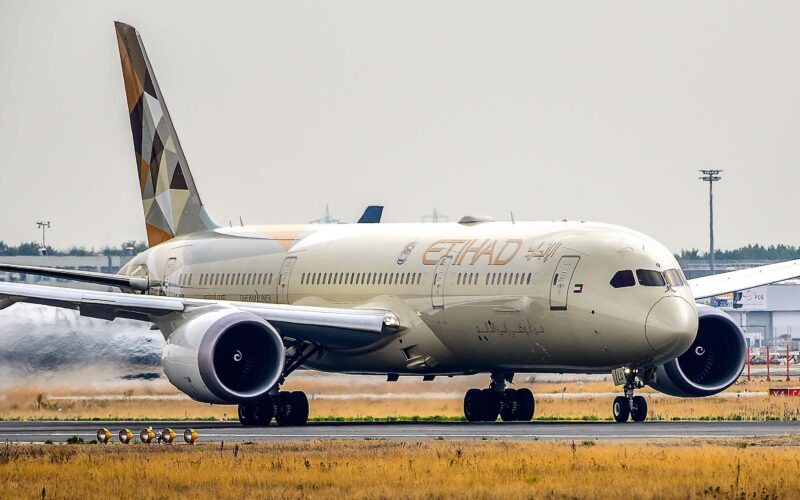On April 22, 2021, Etihad Airways CEO Tony Douglas said the Boeing 787 Dreamliner remained the backbone of Etihad’s fleet, which is currently under transformation.
“The statement we have made clear is that the backbone of our fleet for the medium term is Boeing 787 Dreamliner,” Douglas said speaking at the World Aviation Festival virtual event. The air carrier is also planning to add more Airbus A350XWB aircraft to its fleet.
The Abu Dhabi-based air carrier is one of the biggest operators of Boeing 787 aircraft in the world, having a total of 40 Dreamliners on its fleet, according to Douglas. “What benefited for us is not only the operational economics but also the sustainability proposition of that incredible aircraft”.
Etihad chief executive said that the carrier’s restructuring process was heavily built on fleet changes. As part of a transformation program, Etihad looked to reduce the number of aircraft types it had previously operated. As their fleet got “too far diversified when it came to operational efficiency”, Etihad CEO said the carrier took a decision to exit Boeing 777-300ER aircraft by the end of 2021. Equally, the UAE-based carrier retired all their Airbus A330s from their fleet.
In addition, as the pandemic came into place, on March 23, 2020, Etihad removed 10 Airbus A380s from service indefinitely because the Super Jumbo appeared to be no longer commercially sustainable.
“We see our focused and disciplined operative model which is heavily built around the fleet type of Boeing 787 Dreamliner and Airbus A350-1000XWB,” Douglas added.

